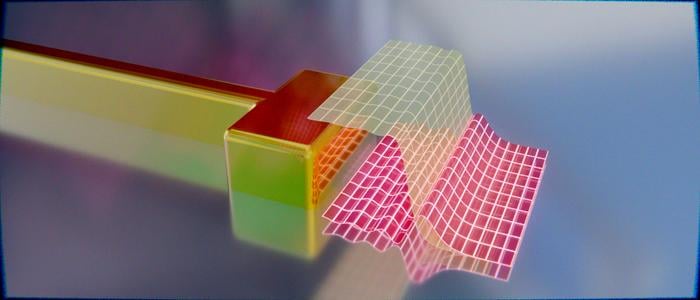Summary: Researchers have achieved electrically controlled modulation of light antennas, paving the way for ultra-fast active plasmonics and potentially much faster computer chips.
Estimated reading time: 6 minutes
A team of researchers from Julius-Maximilians-Universität (JMU) Würzburg and the Southern Denmark University (SDU) has made significant progress in the field of optical computing. Their work, published in Science Advances, demonstrates a method for electrically modulating plasmonic resonators, also known as “antennas for light.” This breakthrough could lead to the development of computer chips that operate up to 1000 times faster than current semiconductor-based chips.
Why it matters: Modern computers are approaching their physical limits in terms of processing speed. By using light instead of electricity to transmit information within computer chips, we could potentially overcome these limitations and dramatically increase computing power. This research represents a crucial step toward realizing that potential, with implications for fields ranging from artificial intelligence to telecommunications.
The Challenge of Light-Based Computing
Current computer chips operate at frequencies of a few gigahertz, corresponding to several billion computations per second. To achieve faster speeds, modern systems often use multiple chips to divide computing tasks. However, this approach has its limitations.
Light-based computing offers a promising alternative. By using photons (light particles) instead of electrons, computer chips could theoretically operate up to 1000 times faster. The key to this technology lies in plasmonic resonators – nanometer-sized metal structures that can interact with light at specific frequencies.
Dr. Thorsten Feichtner, a physicist at JMU and lead author of the study, explains the challenge: “The challenge is that plasmonic resonators cannot yet be effectively modulated, as is the case with transistors in conventional electronics. This hinders the development of fast light-based switches.”
Breaking New Ground in Plasmonic Modulation
The research team’s breakthrough came from focusing on changing the surface properties of the resonator rather than attempting to modify the entire structure. They achieved this by electrically contacting a single resonator – a nanorod made of gold.
Dr. Feichtner describes the effect: “The effect we are making use of is comparable to the principle of the Faraday cage. Just as the electrons in a car struck by lightning collect on the outside and the occupants inside are safe, additional electrons on the surface influence the optical properties of the resonators.”
This approach required sophisticated nanofabrication techniques using helium ion beams and gold nanocrystals, developed at JMU under the direction of Professor Bert Hecht.
Quantum Effects and New Theoretical Models
The researchers’ measurements revealed changes in the resonator’s behavior that couldn’t be explained by classical physics alone. Instead of electrons simply stopping at the edge of the nanoparticle, they observed a “smearing” effect across the boundary between metal and air.
To explain these quantum effects, theorists at SDU Odense developed a semi-classical model. This model incorporates quantum properties into a surface parameter, allowing calculations to be performed using classical methods.
Luka Zurak, a JMU physicist and first author of the study, explains: “By perturbing the response functions of the surface, we combine classical and quantum effects, creating a unified framework that advances our understanding of surface effects.”
Future Applications and Research Directions
This research opens up several exciting possibilities:
- Design of new antennas: The new model allows researchers to design antennas that can exclude or amplify specific quantum effects.
- Optical modulators: Smaller resonators could lead to highly efficient optical modulators for technological applications.
- Catalytic processes: The system could be used to investigate the influence of surface electrons in catalytic processes, potentially advancing energy conversion and storage technologies.
Dr. Feichtner emphasizes the long-term potential: “In the long term, we envisage even more applications: Smaller resonators promise optical modulators with high efficiency, which could be used technologically. In addition, the influence of surface electrons in catalytic processes can also be investigated with the system presented.”
While this research represents a significant step forward, it’s important to note that practical applications in computer chips are still years away. Further research is needed to scale up the technology and integrate it with existing computing architectures. However, this work provides a crucial foundation for future developments in ultra-fast computing and optoelectronics.
Quiz:
- What is the potential speed increase of light-based computing compared to current semiconductor-based chips?
- What is the name given to the nanometer-sized metal structures that can interact with light at specific frequencies?
- What effect did the researchers observe that couldn’t be explained by classical physics alone?
Answer Key:
- Up to 1000 times faster
- Plasmonic resonators or “antennas for light”
- A “smearing” effect of electrons across the boundary between metal and air
If our reporting has informed or inspired you, please consider making a donation. Every contribution, no matter the size, empowers us to continue delivering accurate, engaging, and trustworthy science and medical news. Independent journalism requires time, effort, and resources—your support ensures we can keep uncovering the stories that matter most to you.
Join us in making knowledge accessible and impactful. Thank you for standing with us!

